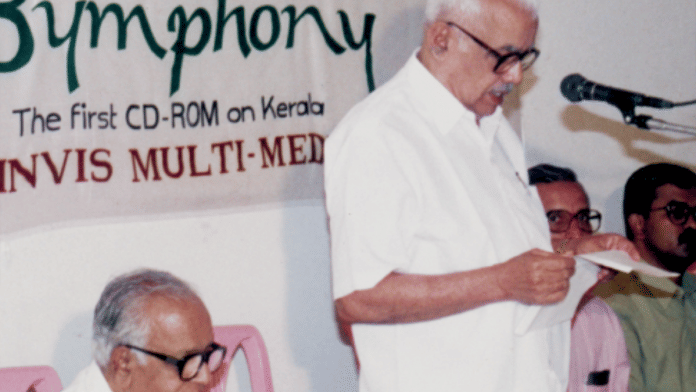Gujarat has two sets of laws for city governments, the Bombay Act for municipal
corporations and the Gujarat Act for municipalities. Most of the relevant provisions regarding rule-making existed prior to the CA. The Bombay Act empowers municipal corporations to ‘amend, alter, or annul’ and make new provisions regarding rules laid down in the Act with state government oversight.
Municipal corporations can frame rules regarding: the internal proceedings, committees and general conduct of business; the qualifications and method of appointment of employees; contract design and execution; public construction; and budget and tax administration.8
The Gujarat Act gives rule-making powers over separately specified domains
to the municipalities and the state government.
For example, while the state government makes rules for 10 matters concerning employee administration, the municipalities make rules regarding appointments and regulation of employee conduct. The law also gives municipalities the authority over conduct of internal business such as defining the functions of the leadership (president, vice-president, committee chairpersons), establishment matters, general guidance to municipal servants, prescribing taxes, and so on (Section 271). Through bye-laws, municipalities have the power to regulate: establishments and markets that affect public hygiene and health (including slaughterhouses, dairies and cattle sheds); water supply; construction of buildings; drains; traffic control; and so on.
Kerala Law and Rule-Making
The Kerala legislature instituted the Kerala Municipality Act (KMA) in 1994 to conform to the CA. It concerns the administration of both municipal corporations and municipalities. The KMA gives ‘powers, authority and responsibilities’ to city governments so that they can function as ‘self-government’ institutions in their newly expanded domains. It required the state government to soon transfer ‘all institutions, schemes, buildings, other properties’ as well as corresponding plan and budgetary allocations to city governments.
Sivaramakrishnan (2000) singles out Kerala, along with West Bengal, as a state that not only enacted laws to conform to the CA but went beyond it to clarify and amplify the functional domain of city governments; by comparison, in many other states, conformity to the CA was less explicit and scattered across different laws and government orders. But the KMA explicitly gave extensive powers to the state government to make detailed rules regarding city government functioning: preparation and implementation of development plans; use of municipal funds; audit of accounts; valuation of buildings and land; and acquisition of property by the city government. The KMA even gave the state government the authority to prescribe how to make estimates for public works and implement them, as well as instructions on supervisory arrangements. The Kerala rules themselves contain provisions enabling the state government to issue guidelines, directions and advisories.
Kerala’s state government was prolific in its use of these rule-making powers affecting everyday, routine transactions in functions ostensibly devolved to the city government. Micromanagement extended to instances such as the state government directing city governments regarding the purchase of bitumen for road work – when to stop purchasing, when to restart, where to purchase it from, and so on. The state government’s Local Self Government Department (LSGD) framed rules for approving city government staff positions of all categories.
Also read: Kautilya was no Machiavelli, he’s the most pre-eminent economist in history
It framed rules for goods and works procurement even though the state government Public Works Department (PWD) has a Works Code and the Finance Department has a Store Purchase Code, both of which are used across government departments. Even these state codes were effectively replaced by an open-ended, continuous flow of instructions from the state government. In doing this, the LSGD also created uniform internal governance arrangements in all municipal corporations and municipalities, going against the spirit of decentralisation where structures and arrangements should be responsive to specifics of local context and priorities.
The KMA 1994 gives little rule-making authority to city governments. In 1999, the legislature rewrote the 1994 legislation. On the one hand, it required that an independent authority should scrutinise any state government attempt to modify or overturn a decision of a city government.19 But all its other provisions weakened city government autonomy and effectively recentralised governance. These are detailed below. The KMA 1994 had required city governments to prepare Development Plans according to a deadline set by the state government, but the 1999 legislation also required them to make the substance of the plan according to state government directions. According to the KMA 1994, city governments could decide both the type of contracts for public works and the manner of their execution, but the 1999 legislation gave the state government authority over all
aspects of procurement, contract and execution of public works, including matters such as estimate preparation, bidding, contractor selection, supervisory arrangements and payment procedures. Even on basic, simple functions such as street lighting, the 1999 legislation constrained the city government’s role so that the state government could now step in to provide the service. The 1999 legislation also gave the state government fresh rule-making powers over an additional 42 matters (beyond the original 26) shaping city government functioning. The state government could create procedures for the convening of ward sabhas and ward committees, remove the city government’s authority over road works, and so on. In sum, Kerala’s 1999 legislative changes reinforced the state government’s authority to frame rules regarding city governments.
 This excerpt from Governing Locally by Babu Jacob and Suraj Jacob has been published with permission from Cambridge University Press.
This excerpt from Governing Locally by Babu Jacob and Suraj Jacob has been published with permission from Cambridge University Press.






